Wood, the hard fibrous structural tissue found in the stems and roots of trees and woody plants has been used by man for milannia, making fire, tools, weapons, art, housing, paper etc. it has helped man survive since the dawn of time. Wood has a primordial appeal not only in its practicality but also its natural beauty offering a myriad of natural grains, textures, and colours within the same and between different species, no two piece of wood is identical.
Wood is hard and durable but it will succumb to the effects of UV breakdown, water, insect and microbial attack. The performance and use of common wood species used in Australia is detailed in the table below, regardless of the species, all wood needs to be protected and maintained in order to survive the ravages of time in the harsh Australian environment. Aqualis exterior timber care products have been successfully used professionally for over 15years.
Coatings developed by Aqualis Coatings encorporate only the highest quality materials, all products are manufactured in Australia and tested rigorously in the harsh Australian environment to ensure optimum performance. Unlike most of its major competitors, Aqualis Coatings is soley Australian owned and manufactures all its products at its manufacturing site in Campbellfield Victoria , Australia.
The table below outlines common timber species used in Australia, their properties, colour and general uses. The table also serves as a colour selection guide against relevant species, colour options in each shade category range from light to darker shades.
Please Note: The Colour swatches displayed only serve as a guide. The final colour will be dependent on the number of coats used and the pre-existing colour of the substrate to be painted. We highly recommend testing the selected colour for suitability before use, samples can be supplied upon request.
Exterior durability rating 1 -5 (1 excellent - 5 poor) | Hardness rating 1 - 15 (1 soft - 15 excellent hardness) |
| Natural Colour Shade |
|---|
pale straw-yellow, tan-light browns, light reds |
Treated Pine
Treated pine is a common decking timber. It is cheaper compared to other timbers and an ecomomical option to those on a tight budget. Treated pine can be used in both indoor and outdoor decking applications. It can be stained to desired colour. Depending on the H-rating, it can withstand harsh conditions and be used in environments where it is wet and humid. It is a soft blonde wood and has had its issues with wear, bowing and twisting. Colour is light yellow-tan with greenish tinge from its preservation treatment. (Used in garden sleepers, posts, fencing, flooring, building construction)
| Exterior Rating | Hardness (seasoned) |
|---|---|
1 | 4 |
Cypress Pine
Naturaly highly decay and termite resistant. Heartwood varies from pale fawn to dark chocolate. The Sapwood is predominantly pale yellow and sometimes pinkish, dotted with very distinct black or dark coloured knots throughout. The grain is straight with a medium uniform texture. Has a natural lustre with a slightly greasy or oily feel. (Used in flooring, panelling,building framework, posts, small poles.)
| Exterior Rating | Hardness (seasoned) |
|---|---|
1 | 6 |
Yellow Stringy Bark
Medium to large hardwood found in Southern NSW and Eastern Victoria. Heartwood is yellowish brown with a pink tinge. Sapwood is much paler and is clearly distinguishable. Texture is medium and even. Grain is often interlocked. (Used in building framework, sleepers, poles, piles, cross-arms, flooring)
| Exterior Rating | Hardness (seasoned) |
|---|---|
2 | 8.5 |
Mountain Ash
Hardwood of mountain regions of Tasmania and Eastern Victoria and is the largest of the eucalyptus species. Heartwood is pale pink or pale straw. Sapwood is not aleays clearly distinguishable. Texture is rather coarse. Grain is straight, growth rings conspicuous and gum veins are common. (Used in furniture, joinery, plywood, handles, flooring, panelling, general construction)
| Exterior Rating | Hardness (seasoned) |
|---|---|
3 | 4.9 |
Tallowwood
Large hardwood of the coast and coastal ranges between the Hunter River in NSW and the Maryborough district of QLD. Heartwood is yellowish brown with a tinge of olive green. Sapwood usually distinctively paler. Texture is moderately coarse but even. Grain is often interlocked. Surface has a greasy feel to it and care must be taken in surface preparation before glueing or coating to ensure a good bond. No gum veins. Pin-hole borer marks are often present as are fibre separations known as 'water rings'. (Used in heavy engineering structures, sleepers, bridges, wharfage, flooring, cladding, sills, cross-arms, poles, piles, cooling towers)
| Exterior Rating | Hardness (seasoned) |
|---|---|
1 | 8.6 |
| Suggested Colour Selection(s) |
|---|
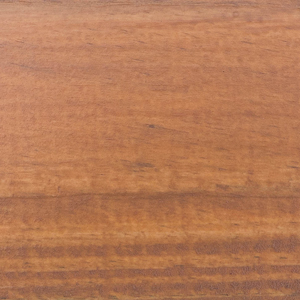 Light Oak 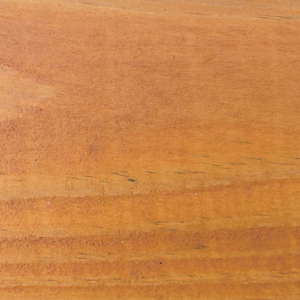 Pine 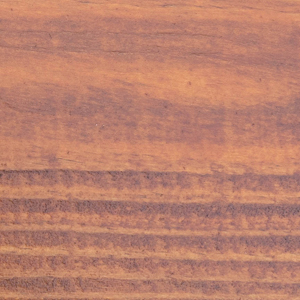 Natural |
| Natural Colour Shade |
|---|
light to medium browns |
Spotted Gum (NSW)
NSW spotted gum is generally lighter than queensland spotted gum. Heartwood ranges in colour from very pale to chocolate, greyish tones to an overall light/medium brown appearance. Sapwood is distinctly paler which may have areas of intermediate wood which is more dense and harder to impregnate with preservatives or coatings. Texture is moderately coarse. Grain is variable with the frequent presence of an attractive and quite distinct wavy or 'fiddelback' pattern. Gum veins are common. It is termite resistant and exhibits slight leaching. (Used in heavy engineering construction, piles, poles, shipbuilding, agricultural machinery,flooring, plywood, handles)
| Exterior Rating | Hardness (seasoned) |
|---|---|
1 | 11 |
Brush Box
Medium to large sized Australian hardwood that occurs along the edges of the rainforest areas of the central coast of New South Wales to Bowen in Queensland. Its heartwood can vary in appearance, from a greyish pink through to a reddish brown, while the sapwood is usually paler in colour. Texture is fine and even. Grain is usually interlocked to varying degrees. Free of gum veins but may have occassional imperfections. Highly wear resistant and has good resistance to splintering. Waxy feel is low in tannins and is less likely to stain when wet. (Used in flooring,cladding, panelling, mallets, pulley blocks bridge decking)
| Exterior Rating | Hardness (seasoned) |
|---|---|
3 | 9.1 |
Blackbutt
Large hardwood growing in the coastal forests between Bega, NSW and Maryborough, QLD. Hearthood is pale brown, but Qld variety may have a pinkish tinge. Sapwood is distinctively paler. Texture is medium and even. Grain usually straight, gum veins are present. Poor base for paint because of its tendency to surface check. (Used for poles, sleepers,flooring, building framework)
| Exterior Rating | Hardness (seasoned) |
|---|---|
3 | 4.9 |
| Suggested Colour Selection(s) |
|---|
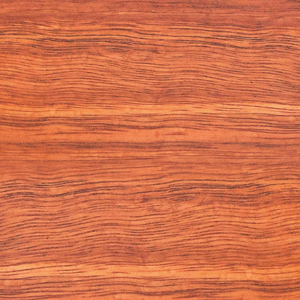 Light Oak 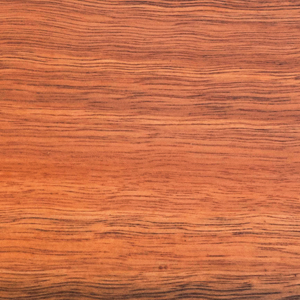 Western Red 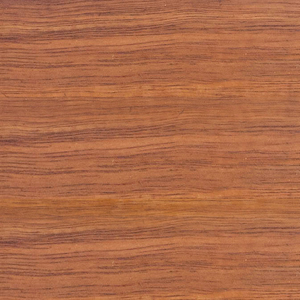 Natural |
| Natural Colour Shade |
|---|
medium to dark browns |
Spotted Gum (QLD)
Darker than NSW variety. Heartwood is light tannish brown to chocolate and sometimes with an overall reddish tinge. One of the darkest brown species found in Australia. Grain is often interlocked and features some distinctive 'Fiddleback'. It is resistant to termites and exhibits slight leaching. (Used in heavy engineering construction, piles, poles, shipbuilding, agricultural machinery, flooring, plywood, handles)
| Exterior Rating | Hardness (seasoned) |
|---|---|
1 | 11 |
Merbau (Kwila)
Durable Asian rainforest hardwood found throughout South-East Asia and eastwards to PapuaNew Guinea, Philippines, Solomon Islands and Fiji. Occurs occassionaly in north Queensland. Heartwood may be bright yellow when first cut but oxidizes to a dark reddish brown. Sapwood is pale yellow and usually distinct from the heartwood. Texture moderately coarse but even. Grain is sometimes slightly interlocked, producing a ribbon figure on the radial surface. Rather greasy to the touch. Contact with iron in the presence of moisture will cause formation of a black stain. High degree of leaching of Tannins . (Used in furniture, flooring, decking, panelling, turnery, sills, boat building, cross arms, carving,window joinery, veneer)
| Exterior Rating | Hardness (seasoned) |
|---|---|
1 | 8.6 |
Ironbark
Large hardwood common along the coast of NSW and QLD, very hard dense durable and structuraly strong timber. Most durable wood to use especially around swimming pools. Heartwood colour varies considerably from pale brown to chocolate and also dark red. Texture moderately coarse and even. Grain usually interlocked. (Used in heavy engineering construction, poles, sleepers, flooring, decking, shipbuilding)
| Exterior Rating | Hardness (seasoned) |
|---|---|
1 | 14 |
| Suggested Colour Selection(s) |
|---|
 Light Oak 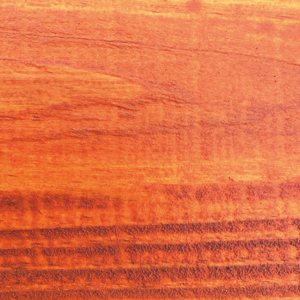 Western Red  Natural |
| Natural Colour Shade |
|---|
reds |
Mahogany Rose (Rosewood)
Large hardwood of the east coast rainforests between the Hawkesbury River and north QLD. Heartwood is reddish brown, sapwood is much paler. Relatively fine uniform texture. Grain is often interlocked. Easy to work with but can be rather brittle predrilling of holes is necessary. Prone to gum bleed through which can interfere with coatings, ensure timber is kiln dried to avoid this problem. The sanding dust can be irritating to mucous membranes. (Used in furniture, panelling, joinery, turnery, carving, window framesand sills, decorative veneer)
| Exterior Rating | Hardness (seasoned) |
|---|---|
1 | 8.3 |
Turpentine
Large Harwood found in the east coast between Sydney and Cairns. Perhaps the most difficult Australian timber to burn. Heartwood is reddish brown, sapwood is distinctly paler. Texture is fine and even. Grain is often interlocked. No gum veins. Its general appearance is similar to that of redder types of brushbox. Presence of silica in the dry wood is prone to quickly blunt cutting blades. Can leach out extractives that produce brown stains on alkaline surfaces such as concrete and fibre cement. Very good resistance to marine organisms. (Used in marine piling, poles, sleepers, shipbuilding, wharf and bridge decking, bearings, flooring, panelling, building framework)
| Exterior Rating | Hardness (seasoned) |
|---|---|
1 | 12 |
River Red Gum
A medium to large hardwood found adjacent to most of the inland rivers of mainland Australia. It is a unique eucalypt in that it can withstand quite long periods of flooding. Heartwood is red to reddish brown with the Sapwood distinctly paler. Texture is relatively fine and even. Grain is often interlocked, often producing an attractive ripple or fiddleback figure. Gum veins are common. Slight leaching. (Used in flooring, sleepers, furniture, decorative turnery, panelling, sills, posts.)
| Exterior Rating | Hardness (seasoned) |
|---|---|
1 | 10 |
Forest Red Gum
Large hardwood of the coastal districts from Warragul in Victoria to the Cairns district of north Queensland, sometimes extending onto the adjacent tablelands. Heartwood is red and the sapwood is distictly paler. Texture is moderately coarse and even. Grain is often interlocked. Slight leaching. (Used in heavy engineering construction, machinery bearings, poles)
| Exterior Rating | Hardness (seasoned) |
|---|---|
1 | 12 |
Jarrah
Large hardwood of the south-west corner of Wesatern Australia. Heartwood is dark red with sapwood a pale yellow. Texture is relatively coarse but even. Grain is slightly interlocked, sometimes producing a fiddlegack figure. Slight leaching. (Used in general construction sleepers, poles, piles, flooring, panelling, loinery and furniture)
| Exterior Rating | Hardness (seasoned) |
|---|---|
2 | 8.5 |
| Suggested Colour Selection(s) |
|---|
 Western Red  Natural 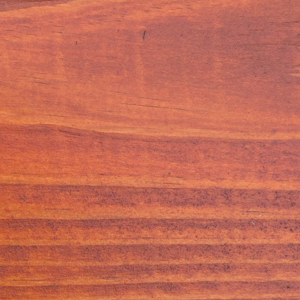 Jarrah 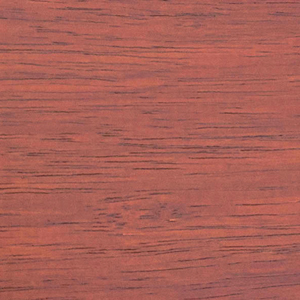 American Walnut 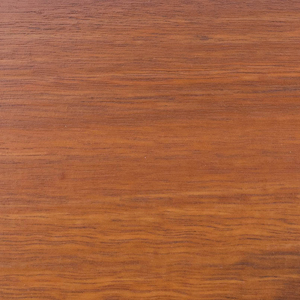 Merbau |



